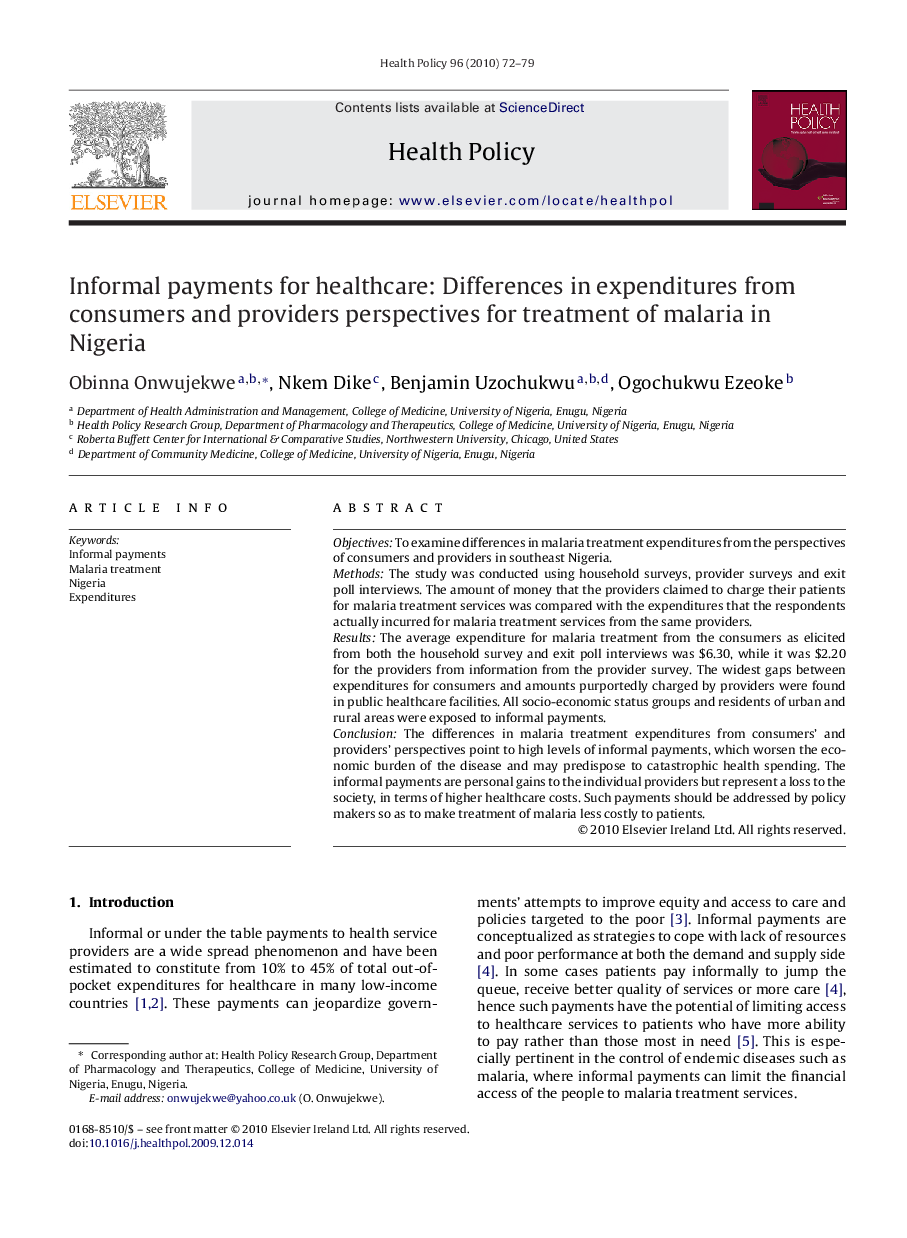| Article ID | Journal | Published Year | Pages | File Type |
|---|---|---|---|---|
| 4198254 | Health Policy | 2010 | 8 Pages |
ObjectivesTo examine differences in malaria treatment expenditures from the perspectives of consumers and providers in southeast Nigeria.MethodsThe study was conducted using household surveys, provider surveys and exit poll interviews. The amount of money that the providers claimed to charge their patients for malaria treatment services was compared with the expenditures that the respondents actually incurred for malaria treatment services from the same providers.ResultsThe average expenditure for malaria treatment from the consumers as elicited from both the household survey and exit poll interviews was $6.30, while it was $2.20 for the providers from information from the provider survey. The widest gaps between expenditures for consumers and amounts purportedly charged by providers were found in public healthcare facilities. All socio-economic status groups and residents of urban and rural areas were exposed to informal payments.ConclusionThe differences in malaria treatment expenditures from consumers’ and providers’ perspectives point to high levels of informal payments, which worsen the economic burden of the disease and may predispose to catastrophic health spending. The informal payments are personal gains to the individual providers but represent a loss to the society, in terms of higher healthcare costs. Such payments should be addressed by policy makers so as to make treatment of malaria less costly to patients.
